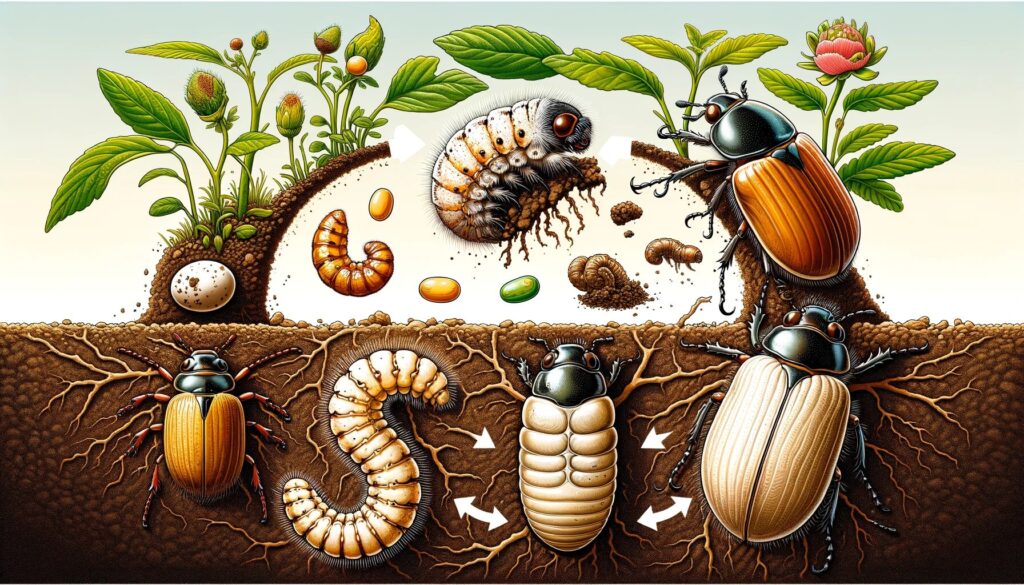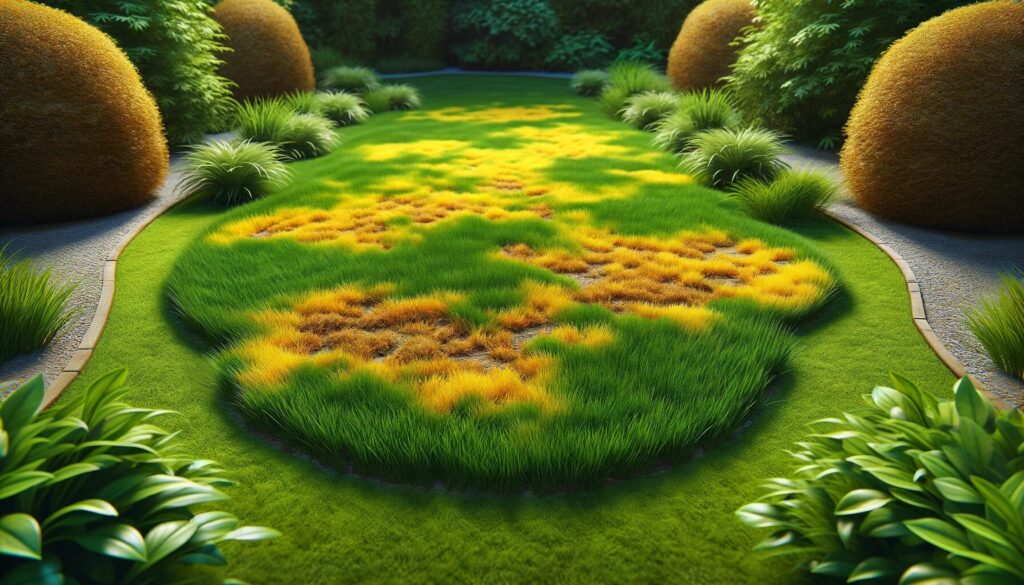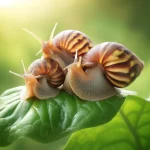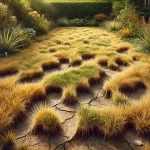The white grub, scientifically known as Melolontha melolontha, is a type of beetle that belongs to the Scarabaeidae family. This insect is known for its larval stages, which live underground and are considered pests in agriculture, especially in lawns and golf courses, as they feed on plant roots.

Life Cycle of Melolontha melolontha
The white grub, scientifically known in its adult stage as Melolontha melolontha and in its larval stage as beetle larva, goes through a complete life cycle that includes several clearly differentiated stages. Here I detail each one of them:
- Egg: The stage begins when adult beetles lay eggs in the soil. These eggs are small and are deposited in groups in the earth, preferably in soils rich in organic matter. Egg laying usually occurs in the spring or early summer.
- Larva (White Grub): After the eggs hatch, the larvae emerge, which are the most well-known and damaging stage of the white grub. These larvae are creamy white in color, with a C-shaped body and a dark brown head. They live underground and feed on plant roots, including those of the lawn, for several years. This larval stage is what causes the most damage to gardens and agricultural fields.
- Pupa: After several molts and a growth period that can last from one to three years, the larvae turn into pupae. This transformation occurs in the soil, where the larva builds a pupal chamber. During the pupal stage, the insect transforms into its adult form but remains inactive and does not feed.
- Adult (Beetle): Finally, the insect emerges from the soil as an adult beetle. The beetles are considerable in size and are capable of flying. They feed on leaves of trees and shrubs, but unlike their larval stages, they generally do not cause significant damage to plants. After mating, the females lay eggs in the soil, starting a new cycle.

The complete life cycle of the white grub, from egg to adult, can vary depending on environmental conditions, such as temperature and food availability. This cycle is fundamental to understanding how to manage and control the populations of this insect in agricultural and gardening environments.
White Grub Larvae
The larval stage of the white grub, which is the most damaging phase for gardens and lawn areas, deserves detailed attention, especially regarding the damage it causes to plant roots.

The larvae are creamy white or whitish in color and have a thick, C-shaped body. They possess a dark brown head and well-developed jaws. They can reach up to 4-5 cm in length at maturity.
Duration of the Larval Stage
This phase can last from one to three years, depending on environmental conditions such as temperature and soil moisture.
Behavior and Feeding
The larvae live beneath the surface of the soil, where they spend most of their time feeding. They primarily feed on roots of a variety of plants, including lawns, vegetables, and ornamental plants. Their preference for grass roots makes them a significant pest in gardens and sports fields.

Root Damage
By feeding on the roots, the larvae prevent the plants from adequately absorbing water and nutrients from the soil. This weakens the plants, making them more susceptible to diseases and adverse weather conditions. Severe root damage can lead to the death of plants, especially in well-maintained lawns and gardens.
Damage to Lawns and Gardens by White Grubs
The damage caused by white grub larvae to lawns can be considerable and, if not properly managed, can lead to significant degradation of green spaces. Here I provide more details on how these larvae affect the lawn and the symptoms to look out for:
Nature of the Damage
The larvae feed on the roots of the grass, which decreases the plants’ ability to absorb essential water and nutrients from the soil. This damage to the roots compromises the overall health of the lawn.

As the roots are damaged or destroyed, the grass blades lose their vigor, turn yellow or brown, and eventually die. This can result in scattered patches of dead or damaged grass.
The activity of the larvae beneath the surface can cause the soil to become loose and spongy. This can affect the stability of the lawn and make it more susceptible to other types of mechanical damage.

Visible Symptoms
- Brown or Yellow Patches: One of the most evident signs is the appearance of irregular areas of grass changing color to yellow or brown.
- Areas of Lawn that Lift Easily: Due to the loss of roots, large sections of the lawn can easily lift, almost like a carpet, as the roots that would normally hold it in place have been consumed.
- Presence of Birds or Mammals: Birds and other animals may begin to feed on the larvae, which can be indicative of an infestation. These animals often dig in the lawn, causing additional damage.
Aggravating Factors
Heat or drought stress can exacerbate the damage caused by the larvae, as the already weakened lawn has less capacity for recovery.
The more larvae present, the greater the potential damage. Early management is crucial to prevent massive infestations.
Control and Prevention
Conducting regular lawn inspections can help identify the presence of larvae early on.

The use of beneficial nematodes or specific insecticides can be effective, but should be done following expert recommendations.
A well-maintained and healthy lawn is less susceptible to severe damage. This includes proper watering, fertilizing, and mowing practices.
 AgronoBlog – Agriculture Blog
AgronoBlog – Agriculture Blog 
